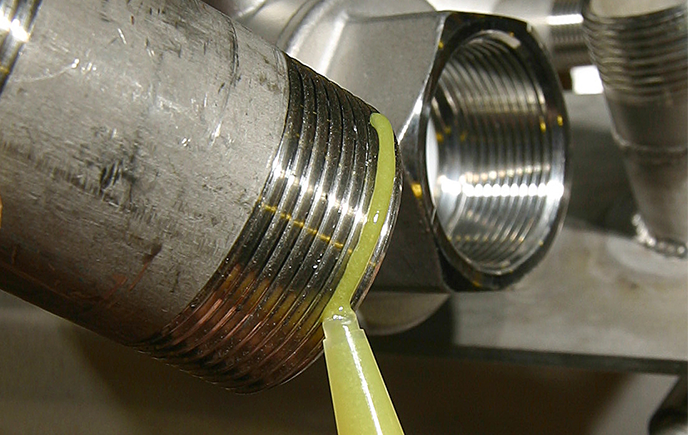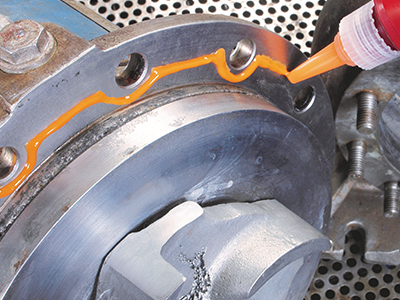Full steam ahead - Scottish distillery with Grundfos
There’s steam and there’s high-quality steam. There are pump solutions and intelligent pump solution...
Irrespective of the industry, hygiene is a top priority. Not only to underpin product safety, but to address the need to minimise costs associated with cleaning. Today, the quest for a cleaner and more cost-efficient plant seems to be underway, and it’s believed that improving cleanability, as well as machine functionality, is the driver in achieving these goals. Afterall, a cleaner environment, is a safer and more productive one.

In the case of pumps, for example, many are cleaned-in-place, without disassembly. This often creates widespread issues, with cleaning fluids not reaching those ‘hard to hit’ areas on our process machinery. Contamination during the next phase of production is therefore more likely.
To combat the problem, manufacturers have begun to develop new models, which eliminate the small crevices where bacteria accumulates. But could using anaerobic adhesives provide a simpler, more cost-effective option to this on-going issue?
More emphasis is now being placed on prevention, such as minimising corrosion and leakage, with the hope that equipment will work better, for longer and help reduce the burden of maintenance.

Previously, vibration locking devices have been used to prevent the loosening of threaded fasteners, leading into a reduction in leaks. But although they have their advantages, none are fully able to eliminate leakage and corrosion. Here’s where adhesive threadlockers really add value.
Anaerobic adhesives are an excellent method of augmenting the seal or holding force of a mechanically joined assembly. They completely fill the gaps between mating surfaces and joints, curing at room temperature to form a hard-solid thermoset plastic.
With the fitting secured in place, the risk of loosening from vibration is significantly reduced. Moreover, it will not contaminate any lubricating oils. They are also often complemented by flange sealants, which are commonly combined with thread lockers on flange bolts to guarantee a leak-free assembly.
Adhesive bonding provides uniform stress distribution over the entire bond face, which has a positive effect on the static and dynamic strength achieved, without changing the surface or structure of the joined materials. Some also form an insulating film to prevent contact corrosion, while acting as an electrical and thermal insulator. So, from a cleanability standpoint, the results are positive.

Chemical resistant coatings are another means of preventing oil loss from seepage and are ideal for sealing casting parts where porous areas formed in the manufacturing process. Through coating the interior of a bearing frame during assembly, for example, the dangers of leaks are eliminated. Or, if you’re aware of where the leak points are, a wicking grade threadlocker is an excellent choice for creating an effective seal.
Unhygienic leaks are also a common challenge, particularly with pumps, with air space, once again, being the main culprit. As with threadlocking, there are a range of products to choose from – solvent-based compounds, PTFE tapes, and paste – but anaerobic adhesives truly have the edge.
For years, conventional joining methods, although fairly successful, have come at high costs. But also, limitations. For example, welding is limited to metal-to-metal or specific plastic-to-plastic bonds. But by using adhesives, the scope of substrates is substantially extended to include plastic-to-metal, glass-to-plastic and rubber-to-metal. The possibilities are endless as they say.

The hygienic design and maintenance of our production equipment is clearly essential, and cleanability is highly relevant to all manufacturing and processing plants. So, as the quest continues for cleaner and more efficient manufacturing facilities, it seems that engineering adhesives have a vital role to play.
By choosing LOCTITE®’s range of innovative sealing products, maintenance engineers have the assurance that the products they use, are the same as those supplied by OEMs.
Get the latest updates from ERIKS including:
Choose any or all of these via the ERIKS Subscription Centre!
Our Know+How brings together the best of the latest Know+How Hub articles in one easy to digest magazine, covering the following topics:
That's why its the leading magazine for maintenance engineers from ERIKS.
Want Know+How Magazine delivered direct to your door? Visit the ERIKS Subscription Centre to opt-in!
Take a look at our latest updates...
There’s steam and there’s high-quality steam. There are pump solutions and intelligent pump solution...
Looking for a custom Product quote? Need an answer to a Technical question? Looking for Careers/HR support? Want to work with us? Interested in our Digital Trading solutions? Have a finance question? Send us your enquiry and a member of the ERIKS team will be with you quickly.
We strive to deliver exceptional quality service and products. As part of this goal, we encourage customers to submit feedback on their experiences so we can resolve any issues and concerns.
At ERIKS we strive to deliver the best quality service and products. As part of this goal we encourage customers to submit feedback on their experiences so we can resolve any issues and concerns.
Call us: +441215086000
